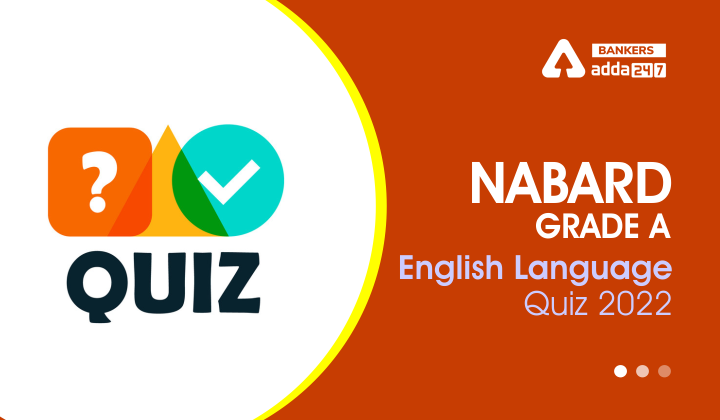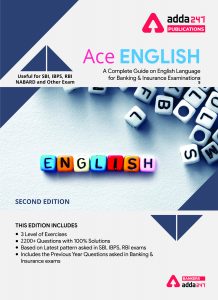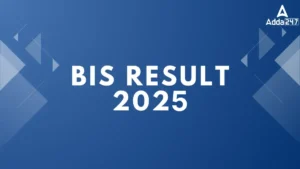Directions (1-10): In the following passage, some of the words have been left out, each of which is indicated by a number. Find the suitable word from the options given against each number and fill up the blanks with appropriate words to make the paragraph meaningfully complete.
CHITRASUTRA, the ancient Indian __(1)____ on painting, began in the oral ___(2)___ before it was recorded on paper sometime in the fifth century C.E. The renowned art historian Benoy K Behl set out to study this treatise in the ___(3)____ of documenting Indian art, beginning in 1991 with the ___(4)____ paintings of Ajanta. He soon ___(5)____ that Indian art had taken over his life. “I was deeply moved by the world which was ___(6)______ in the paintings of Ajanta…. The thousands of figures, painted on the walls of the caves, each radiated a warmth and ___(7)_____ for others. It was a love for all beings which ___(8)____ this body of art,” he says. His travels took him across the length and breadth of the country and Asia—ranging from the eighth century Sun temple at Martand in Kashmir, which in its time may have been one of the grandest structural temples standing in India; the trans-Himalayan Buddhist monasteries; the breathtaking __(9)____ of the Ramanathaswami Temple in Rameswaram; the rock-cut Jaina reliefs at Kazhugumalai; the glory of the Konark Temple in the east; the Jaina temples in Rajasthan; to the Sun Temple at Modhera in Gujarat, one of the most __(10)____ carved in the subcontinent.
Q1.
(a) treatise
(b) volume
(c) remark
(d) evidence
(e) theme
Q2.
(a) concept
(b) tradition
(c) instruction
(d) solemnity
(e) information
Q3.
(a) spirit
(b) function
(c) process
(d) vivacity
(e) action
Q4.
(a) popularly
(b) inquisitive
(c) average
(d) exquisite
(e) preferential
Q5.
(a) concluded
(b) effectuated
(c) finalized
(d) rendered
(e) realized
Q6.
(a) released
(b) revealing
(c) recognized
(d) presented
(e) exhibiting
Q7.
(a) concern
(b) task
(c) propensity
(d) pursuit
(e) obligation
Q8.
(a) impregnated
(b) pervaded
(c) agonized
(d) pestered
(e) manifested
Q9.
(a) form
(b) composition
(c) concord
(d) architecture
(e) beauty
Q10.
(a) acceptably
(b) profusely
(c) appropriating
(d) properly
(e) charitably
Directions (11-15): Read each sentence to find out whether there is any grammatical or idiomatic error in it. The error, if any, will be in one part of the sentence. The number of that part is the answer. If there is ‘No error’, the answer is (e). (Ignore errors of punctuation, if any.)
Q11. The issues were complex (A)/ and especially the members (B)/ of the committee (C)/ have made them obscure. (D)/ No error. (E)
(a) A
(b) B
(c) C
(d) D
(e) E
Q12. I thought that he (A)/ would come and give (B)/ me the latest information (C)/ about the patient. (D)/ No error. (E)
(a) A
(b) B
(c) C
(d) D
(e) E
Q13. Inquisitive people (A)/ are usually the ones (B)/ who make (C)/ the most exciting discoveries (D)/ No error (E)
(a) A
(b) B
(c) C
(d) D
(e) E
Q14. Mohan said that he was going to (A)/ the library and wanted to (B)/ know that I could (C)/ accompany him. (D)/ No error. (E)
(a) A
(b) B
(c) C
(d) D
(e) E
Q15. All of (A)/ us surprised (B)/ to see an old man of (C)/ sixty taking part in the Marathon held last month. (D)/ No error. (E)
(a) A
(b) B
(c) C
(d) D
(e) E
Solutions
S1. Ans. (a)
Sol. Treatise means a written work dealing formally and systematically with a subject. Hence the word fits into the sentence correctly.
S2. Ans. (b)
Sol. “tradition” is the correct word that fits into the sentence as it means a long-established custom or belief that has been passed on from one generation to another. Hence (b) is the correct option.
Solemnity means the formal and dignified.
S3. Ans. (c)
Sol. “process” is the most appropriate word that fits into the sentence correctly. Hence (c) is the correct option.
Vivacity means the quality of being attractively lively and animated.
S4. Ans. (d)
Sol. Exquisite means extremely beautiful and delicate. Hence it forms the most appropriate word to fill the gap in context of adding meaning to the sentence.
S5. Ans. (e)
Sol. “soon realized” is the correct phrase in context of its usage in the sentence. Hence (e) is the correct option.
Effectuated means put into force or operation.
S6. Ans. (d)
Sol. “presented” is the correct word that adds meaning to the sentence. Other words are irrelevant in context of their grammar structure or usage in the sentence. Hence (d) is the correct option.
S7. Ans. (a)
Sol. “concern” is the correct word in context of its usage in the sentence as it means a matter of interest or importance to someone. Hence (a) is the correct option.
Propensity means an inclination or natural tendency to behave in a particular way.
S8. Ans. (b)
Sol. Pervaded means spread through and be perceived in every part of. Hence the word fits into the sentence correctly.
Impregnated means saturate.
Pester means trouble or annoy (someone) with frequent or persistent requests or interruptions. Agonized means manifesting, suffering, or characterized by great physical or mental pain.
S9. Ans. (d)
Sol. “breathtaking architecture” makes the most appropriate phrase in context of its meaning to the sentence. Hence (d) is the correct option.
Concord means agreement.
S10. Ans. (b)
Sol. Profusely means to a great degree; in large amounts. Hence (b) is the correct word to fill the gap.
S11. Ans. (d)
Sol. Use ‘had’ in place of ‘have’ as from “The issues were complex”, we come to know that the incident occurred in the past.
S12. Ans. (e)
Sol. The sentence is grammatically correct.
S13. Ans. (b)
Sol. The sentence is grammatically correct.
S14. Ans. (c)
Sol. Use ‘if’ or ‘whether’ in place of ‘that’ because ‘if’ or ‘whether’ is used in indirect narration.
S15. Ans. (b)
Sol. Use ‘were’ before ‘surprised’ because the sentence is in passive voice.





 GA Capsule for SBI Clerk Mains 2025, Dow...
GA Capsule for SBI Clerk Mains 2025, Dow...
 The Hindu Review October 2022: Download ...
The Hindu Review October 2022: Download ...
 BIS Result 2024-25 Out for ASO, JSA and ...
BIS Result 2024-25 Out for ASO, JSA and ...





